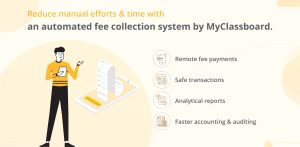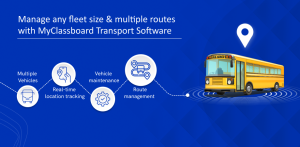What is a Student Information System & what are its benefits to schools?
Schools involve large administrative tasks to maintain hundreds of student records. The student records involve their details, academic details, financial records of fee payment, examination reports, etc. It is time-consuming, manually intensive and consumes a lot of space to maintain heavy files of each student. The entire activity requires a dedicated staff to record, maintain, and retrieve information as and when needed.
What is a Student Information System?
Student Information System or SIS is a computer application to handle the entire school’s student information from their academic performance to pass out details recorded in a centralized cloud server. It helps schools consolidate their student data at a secure cloud location, which is accessible remotely. A student information system allows schools to organize their student data quickly, which is helpful to maintain & retrieve without any loss of data. In addition, since everything is stored online, it supports saving paper.
Integration of supporting tools in school administration makes the Student Information System an efficient software.
What are the benefits of a Student Information System?
The Student Information System acts as a backbone for schools to manage their student activities, starting from maintaining student admission records to their full academic performance details. A few of the exceptional benefits of SIS are;
- Automate admissions
Admission is an important activity, which inducts new students into the school. Every academic year a dedicated staff and teachers handle multiple activities involved in the admission process. It is exhaustive, time-taking, and data-intensive as lots of student data is maintained in papers and files. The Student Information System automates the entire admission lifecycle of a student.
- Schedule academic curriculum or class timetable
As the student information system stores entire student records, it brings an advantage to schools to plan class timetables depending on class strength, the total number of students, grade-wise, teachers’ availability, etc.
- Track attendance
- Seamless communication
As the Student information system records essential student information and their daily academic performance, relying on the information to parents becomes easy with integrating a daily communication software with SIS.
- Record student academics
The technology of the student information system allows schools to record students’ academics at a centralized location. Effective monitoring of student academic records is possible through the application, enabling schools to analyze students’ performance and plan appropriate activities as required.
- Manage assignments
A student information system allows schools to publish assignments for specific classes. Likewise, students can view, complete, and submit their assignments online from student login.
The results of the assignments are stored with each students’ details updating students’ entire academic performance in the school’s database.
- Centralized access for fee collection
As students journey through different classes in their academic history, an integrated student information system allows schools to collect school fees online.
- Manage school visitors
As a student information system stores complete student information of the school, it benefits to manage school visitors. It also allows the security to monitor staff and students’ entry and exit, and the complete log is maintained for security validation.
Maintaining the utmost safety for students is the responsibility of schools. Visitor management allows schools to accurately monitor the entry and exit of staff, students, & other personnel, which can be checked with statistical reports. In addition, complete student information allows easy identification of parents based on school records and sophisticated integration of advanced security systems such as RFID and biometric recognition.
How does MyClassboard SIS help schools?
MyClassboard is a leading school ERP software that’s the top choice of schools to automate their end-to-end school activities. MyClassboard student information system is reliable, simple, and secure to allow school authorities to record their students’ academic details successfully. In addition, the sophisticated platform of the MyClassboard student information system provides integration of tools necessary for the entire workflow of maintaining student information, additionally allowing fee payments, communication, assignment management, and various other academic activities. A user-friendly interface brings ease of handling from day one. Affordable pricing makes it the best choice for schools looking for economic investment in digitizing their student records.
In conclusion
The Student Information system presents a sophisticated outline for schools to handle their admissions, consolidate their student information, and ease administration school activities with the integration of tools. It provides a way for schools to be more productive, starting from admission activity to curriculum completion. Reducing manual paperwork improves time management efficient data storage and enhances the school’s performance.











